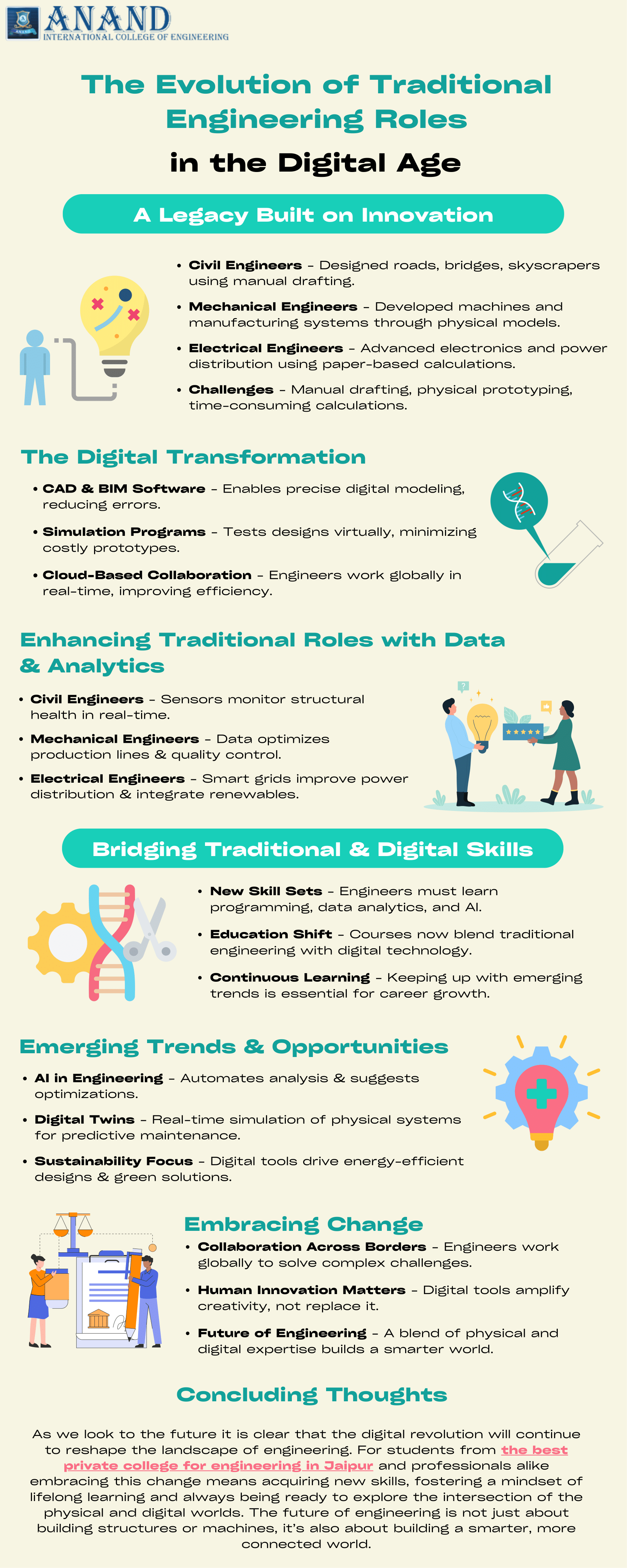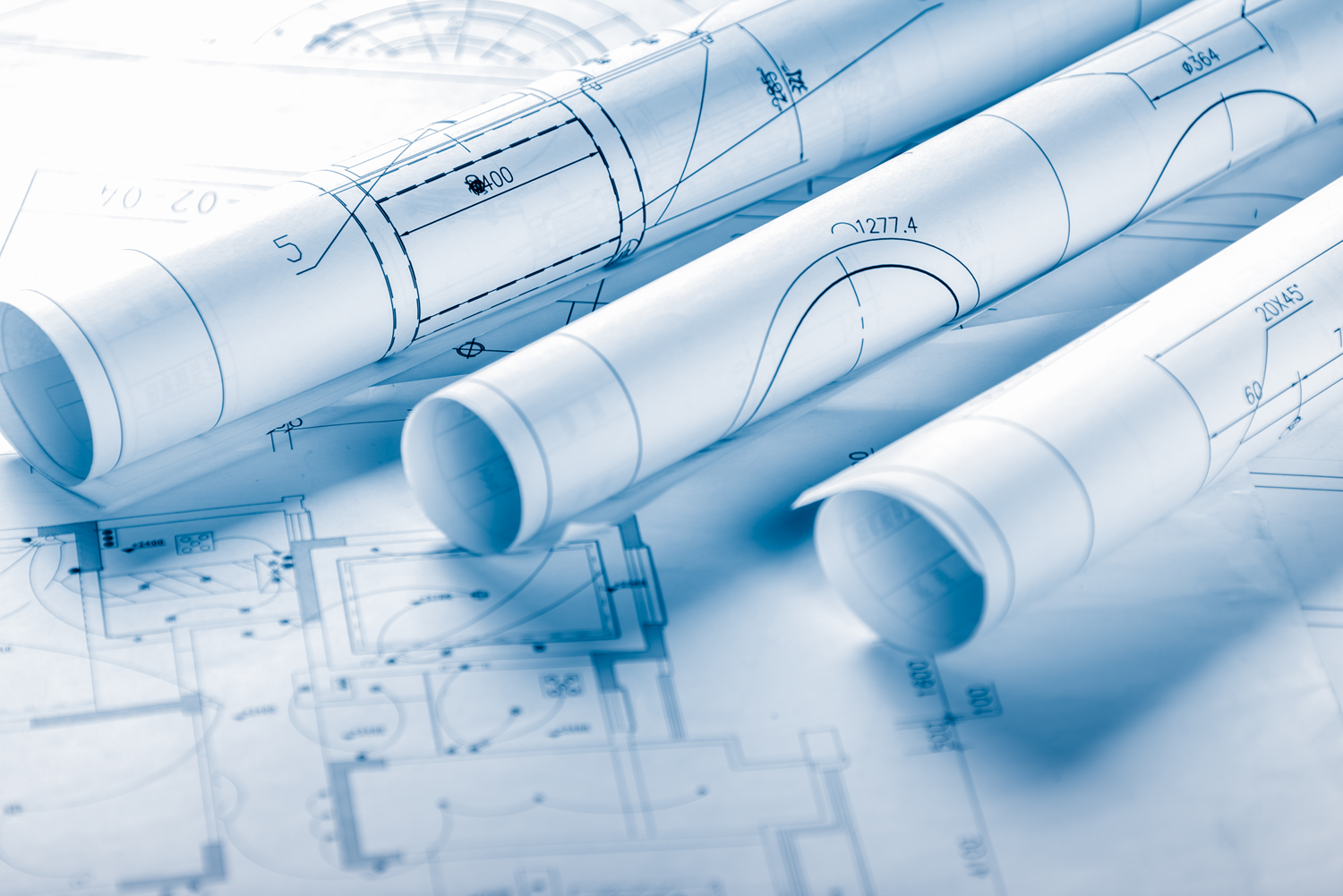Engineering has always been a field defined by innovation, problem-solving and the relentless pursuit of progress. For decades traditional engineering roles such as civil, mechanical and electrical engineering have served as the backbone of modern infrastructure and industry. However these roles are undergoing a profound transformation as the digital age unfolds. Today engineers are not only expected to understand physical systems but also to harness the power of digital tools and data to drive innovation and efficiency.
A Legacy Built on Innovation
Traditional engineering roles have long been synonymous with hands-on problem solving. Civil engineers design and construct our roads, bridges and skyscrapers while mechanical engineers bring machines and manufacturing systems to life. Electrical engineers have powered our world with innovations in electronics and power distribution. These roles were built on a deep understanding of physical laws, rigorous mathematical analysis and practical application. In many ways they laid the foundation for the modern world we live in where safety, efficiency and durability are paramount.
Historically these roles involved a considerable amount of manual drafting, physical prototyping and fieldwork. Engineers relied heavily on physical models and paper-based calculations. The process was time-consuming and often fraught with the possibility of human error. Despite these challenges the ingenuity and creativity of engineers allowed them to achieve remarkable feats of design and construction.
The Digital Transformation: A New Chapter
The advent of digital technology has ushered in a new era for traditional engineering roles. Over the past few decades rapid advancements in computer technology have begun to revolutionize the way engineers approach design, analysis and project management. Digital tools such as Computer-Aided Design (CAD) software, Building Information Modeling (BIM) and simulation programs have become integral to modern engineering practice.
One of the most significant changes is the shift from manual drafting to digital design. CAD software allows engineers to create precise as well as detailed models of their projects with ease. This not only speeds up the design process but also enhances accuracy that enables engineers to identify and correct potential issues before construction begins. Similarly simulation software enables engineers to test and refine their designs virtually that reduce the need for costly and time-consuming physical prototypes.
Digital transformation has also improved collaboration among engineers. Cloud-based platforms allow teams to work on the same project simultaneously, regardless of their geographical location. This seamless integration fosters a more collaborative and dynamic environment, where ideas can be exchanged rapidly and decisions can be made more efficiently. In essence, the digital age has made the engineering process more agile and responsive to the challenges of modern projects.
Enhancing Traditional Roles with Data and Analytics
Digital technology has brought data analytics to the forefront of engineering beyond design and collaboration. Today’s engineers have easy access to data from a variety of sources like sensors, drones and IoT (Internet of Things) devices. This data provides invaluable insights into the performance, safety and efficiency of systems and structures.
For example:
- In Civil engineering, sensors embedded in bridges and buildings continuously monitor stress, vibration and other critical parameters. This real-time data allows engineers to assess structural health and predict maintenance needs before problems become critical.
- Mechanical engineers use data analytics to optimize production lines, reduce downtime and improve quality control.
- Electrical engineers are leveraging data from smart grids to manage power distribution more effectively and integrate renewable energy sources.
The ability to harness and analyze large datasets has not only enhanced the precision of engineering projects but has also opened up new opportunities for innovation. Engineers can now design systems that are smarter, more efficient and more resilient that are essential in a world where sustainability and reliability are increasingly important.
Bridging the Gap Between Traditional and Digital
As traditional engineering roles evolve so do the skill sets required to excel in these fields. While a strong foundation in mathematics and physics remains essential, modern engineers must also be proficient in digital tools and techniques. Programming, data analytics and even a basic understanding of machine learning are becoming valuable assets in an engineer’s toolkit.
Engineering education is adapting to this digital revolution. Many universities and technical institutions like the top private college for engineering in Jaipur now offer interdisciplinary courses that blend traditional engineering principles with digital technology. These programs aim to prepare students for a future where the lines between mechanical, electrical and software engineering are increasingly blurred. The goal is to produce well-rounded professionals who can navigate both the physical and digital aspects of their projects.
Moreover continuous professional development has become a cornerstone of a successful engineering career. Engineers must be willing to update their knowledge and skills throughout their careers as new technologies emerge. This lifelong learning mindset not only keeps professionals relevant in a rapidly changing landscape but also fuels further innovation.
Emerging Trends and Opportunities
Looking ahead the digital transformation of traditional engineering roles is set to accelerate even further. One of the most exciting developments is the integration of Artificial Intelligence (AI) and machine learning into engineering workflows. AI-powered tools can analyze vast amounts of data far more quickly than a human and identify patterns and suggest optimizations that might otherwise go unnoticed.
Digital twins are another emerging trend. These models allow engineers to simulate and monitor the performance of structures, machines and even entire cities in real time. By replicating physical systems digitally engineers can experiment with different scenarios and predict how changes might affect performance, safety and efficiency.
In addition the increasing focus on sustainability is driving innovation in engineering design. Digital tools are enabling engineers to develop greener and more energy-efficient solutions that reduce environmental impact. Whether it’s through the design of sustainable buildings, the optimization of renewable energy systems or the development of more efficient transportation networks, the digital age is empowering engineers to tackle some of the most pressing challenges of our time.
Embracing Change
Despite the technological advancements the human element remains at the heart of engineering. Innovation, creativity and problem-solving are inherently human traits that no machine can replicate. The digital age has not diminished the importance of these qualities and rather it has provided engineers with new tools to amplify their talents and achieve even greater things.
Engineers are now more connected than ever as they are collaborating across disciplines and borders to tackle complex problems. This fosters a culture of continuous improvement and shared learning. As digital technology continues to evolve the roles of traditional engineers will also evolve and adapt to new challenges, will explore uncharted territories and ultimately will work towards shaping the future.
Concluding Thoughts
The evolution of traditional engineering roles in the digital age is a testament to the field’s enduring ability to innovate and adapt. While the core principles of engineering remain steadfast the tools and techniques used by engineers are transforming rapidly. From digital design and simulation to data analytics and AI, modern engineers are better equipped than ever to create safe, efficient and sustainable solutions.
As we look to the future it is clear that the digital revolution will continue to reshape the landscape of engineering. For students from the best private college for engineering in Jaipur and professionals alike embracing this change means acquiring new skills, fostering a mindset of lifelong learning and always being ready to explore the intersection of the physical and digital worlds. The future of engineering is not just about building structures or machines, it’s also about building a smarter, more connected world.
In this era of transformation traditional engineering roles are evolving to meet the challenges and opportunities of the digital age. By leveraging digital tools and innovative thinking today’s engineers are poised to leave an indelible mark on the world that are driving progress and inspiring future generations to push the boundaries of what is possible.


